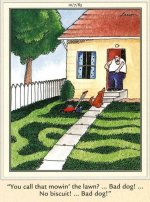From Troels Gravesen website;

Is C1 part of a parallell notch filter? Or is it in (-)series with driver? What is the purpose of C in this position as opposed to the regular (+)series position?
Is C1 part of a parallell notch filter? Or is it in (-)series with driver? What is the purpose of C in this position as opposed to the regular (+)series position?
No difference.
The C1 is still in the same branch, and has the same current and voltage drop, as in the other position.
The C1 is still in the same branch, and has the same current and voltage drop, as in the other position.
But does it make any sense to only have a notch filter on a tweeter? Simulating this in vcad, it has no effect on frequency response, only impedance..No difference.
The C1 is still in the same branch, and has the same current and voltage drop, as in the other position.
The series resistor lowers output level of course.
The capacitor is the high pass element, not a notch filter. Unless its value is very large,
it will certainly affect the frequency response, which is the intention.
it will certainly affect the frequency response, which is the intention.
Must be Troels' early work and seeing the 'main' cap dangling off the 'ground leg' like that when woofer (-) could be 'ground' requires a double and triple take.
I had same reaction as Lament first time i encountered this way to drawn it, in 'church' ( MGM modified Neumann u47) microphone: Anode to transformer coupling capacitor (c5) located after the transformer, instead of the common location in serie with anode but 'before' the transformer ( after node R4 anode V1)...
Spends days scratching my head.
https://www.google.com/url?sa=t&sou...IQFnoECA4QAQ&usg=AOvVaw2Zcoqg6wwvnnn8P1u_0WMt
Spends days scratching my head.
https://www.google.com/url?sa=t&sou...IQFnoECA4QAQ&usg=AOvVaw2Zcoqg6wwvnnn8P1u_0WMt
It's a 2nd order electrical filter.
Here the same components drawn in the same order but more conventional placed

Here the same components drawn in the same order but more conventional placed
If you like 'conventional' parlance, just draw (in mind or physically / electronically 😉 ) a regular damped 2nd order HP with series level padding resistor 'after' the shunt element. In other words, take Troels's drawing & in your mind, place C1 in series with the driver 'before' the R1-L1 shunt. Job-jibbed. It's exactly the same circuit electrically speaking, just a layout / configuration that more people are familiar with.
Like @krivium says, when things are not in the usual expected place/order, I get easily confused 🙂
Learned something new today, thanks to all for explaining!
Learned something new today, thanks to all for explaining!
It doesn't matter, there's no real ground, it's only AC.Could be better? 3R should be in front of the driver, and the driver (-) should be ground, since the driver is the load?
The symbols + - and ground are only used to show the difference in phase.
The way Toels drew it is a little odd. By today's conventions it might look something more like this.

Same filter function, but with the parts in positions that we are used to. It could be drawn a number of different ways.
@Andersonix do I get my biscuit?
Same filter function, but with the parts in positions that we are used to. It could be drawn a number of different ways.
@Andersonix do I get my biscuit?
There should be a difference as the signal sees the cap after having passing the driver's coil ?
Maybe there is a sligthy difference in tonal charachter at iso magnetitude effect ? Maybe to minimize cap's color ? Caps are b****
Maybe there is a sligthy difference in tonal charachter at iso magnetitude effect ? Maybe to minimize cap's color ? Caps are b****
- Home
- Loudspeakers
- Multi-Way
- Strange capacitor position?
